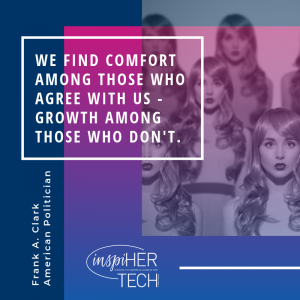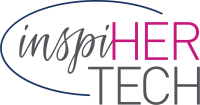While getting my certification from Cornell in Diversity, Inclusion and Unconscious Bias I learned about a really cool study done by Dov Eden with the Israeli military. He told a group of trainers that the next batch of trainees had been carefully assessed on performance and competence criteria. He then said that the groups had been separated as high potential performers, average performers and some that they couldn’t discern which category they belonged.
The trainers were then given the names of each trainee and the group (high potential, average or somewhere in between) that each person has been assessed to be in and told to train them.
The fact was that No Assessments had taken place. The people had actually been selected for the study because there were no discernible differences between each of them. Basically, they all had the same potential.
After one week, they had someone come in to assess how the training was going so far. This trainer did not know that anyone had been labeled anything at all. Based on this trainers’ assessment it was found that those who had been labeled high potential were, in fact, performing at higher levels and those who had been labeled as average were performing at lower levels and those who were not categorized fell somewhere in the middle.
Then this person came back and did another assessment of the the groups several weeks later and found the gaps between high potential performers, average potential and the uncategorized were even wider on how each group was performing.
The trainers were letting their biases determine the outcomes. They got what they expected to get out of each person. They saw what the expected to see.
Another interesting fact that came out of this study was that when the trainees were asked about their experiences with the trainers, the high potentials stated they had much more positive experiences. The trainers praised the high performers more, they gave more leeway to the high potential to succeed because they expected them to succeed.
It does not take much to connect the dots between how our expectations of a person based on their age, race, looks, sex, previous performance appraisals and other labels can influence how we interact with them, if we believe they can do a job, who we hire, how we evaluate a person at performance appraisal time, if we recommend them for career advancement.
We all have biases that we carry with us just because we are human.
The Backstory to Biases
Our brains are inundated with information. A study by the University of California-San Diego, under Roger Bon, estimates that people receive 34 Gigabytes of information every day, an amount that could overload a laptop in a week.
The brain needs to have a way to handle all of this data. It creates short cuts. As a young child, as early as two years old if not sooner, you begin to create what I call Nested Data Buckets that you file info in so that you can manage and make decisions in your daily life quickly and with some level of competence.
How Nested Data Buckets work
When you begin to take notice of people and things you start to label them. You then create different buckets in your brain to put data into as you go through your day to help simplify and manage the data.
For example, you will have a bucket labeled human being in order to differentiate a human from, say, a chihuahua.
Nested within that bucket you also may have a bucket labeled human being-male and another labeled human being-female. Then in those buckets you start to throw in characteristics that you attribute as common to that bucket.
You may, for instance, see a woman with glasses and her hair up in a bun and think she is in the bucket called human being. She is also in the bucket called female. Because of her bun and glasses, she is now in a bucket called smart women because at some point you had a librarian who was a woman who wore her hair in a bun and had glasses who knew a lot of things and you thought of her as smart.
Now all women with glasses and a bun are in the smart woman bucket. They get that benefit of the doubt whether it is true or not.
We need to be able to put information quickly into buckets or we would not be able to function.
How you label a bucket and what characteristics you assign to the bucket is determined when we are young by our parents teaching us how they bucket things. You bucket based on what you learn from your siblings and friends, your personal experiences, and a big one, the media. How people, places and things are portrayed in the media impacts our beliefs and how we bucket.
I’m Biased Against Chihuahuas
An example of bucketing is when I was once cornered by a chihuahua! I was about 7 years old and my family and I had gone to visit some friends of my parents. I had been playing outside. I went to go inside to where my parents were and their chihuahua would not let me in the back door. It was growling, its teeth bared! Needless to say, I was scared and did not like that protective chihuahua one bit.
I now have a bias against chihuahuas. I see one and I cross the street. I have a client who has sent me pictures of his beloved chihuahua and it is all I can do to reply respectfully about the object of his affection when what I want to say is “All chihuahuas should be living on Mars”.
Our need to manage information and make decisions is life-saving. A chihuahua could really mess me up! Or it could be my next best friend if I would give one a chance.
These buckets can cause us to make inaccurate assumptions about people that lead to building teams in your company made up of people like you. You understand people like you. You feel safe with people like you.
Bucketing leads people to ignore someone else’s perspective because if you have a tattoo or gauges in your ears you cannot possibly contribute to the conversation. Your buckets can lead you to praise someone who is not deserving and not praise someone who is. Your buckets can create an atmosphere of in-crowd and out-crowd.
Nested bucketing can create non-inclusive, non-diverse companies.
Beginning to solve the problem of your unconscious bias
What I did learn about biases in my course at Cornell was that just because you have biases or stereotype people does not mean that you act in prejudicial or harmful ways. The more self-aware you are the less likely you act on your biases. You tend to give people the benefit of the doubt.
Try This
- Become more self-aware. Take the Harvard Implicit Bias Assessment.Harvard has put together an implicit bias assessment that is super interesting. The thing I would ask you to remember when taking the assessment is that you have biases. You stereotype people. It is just a fact. Have compassion for yourself and use information like this to raise your self-awareness and begin to change your behaviors.
- Engage in what is called Controlled Processing versus Automatic Processing. Actively reject a possible stereotype. Open yourself up to what might be even more true than what you first considered. Slow down your decision-making process. Have an empty bucket in all interactions.
- Don’t make your decisions alone. Get others opinion. See things from another point of view.
- Understand the value that comes through removing biases in hiring and having a more inclusive work environment. When you see value, it makes it easier to make hard decisions.
- Be OK with conflict. When you are actively choosing to step outside your comfort zone or change how you have been seeing and doing things you may be involved in more heated/colorful/enlightening discussions as you move to a consensus that includes everyone’s perspective. And that’s ok.
- Do something different. If you are in a meeting and notice that someone did not speak up. Seek them out after the meeting and ask their opinion. Also, hindsight can be 20/20-Review previous decisions and notice where bias may have been a part of your process.
Changing your personal biases is not an overnight job. It takes time but as you become more self-aware you will begin to see the power and beauty that comes from inclusion. You will know that you are actually changing the world for the better.

